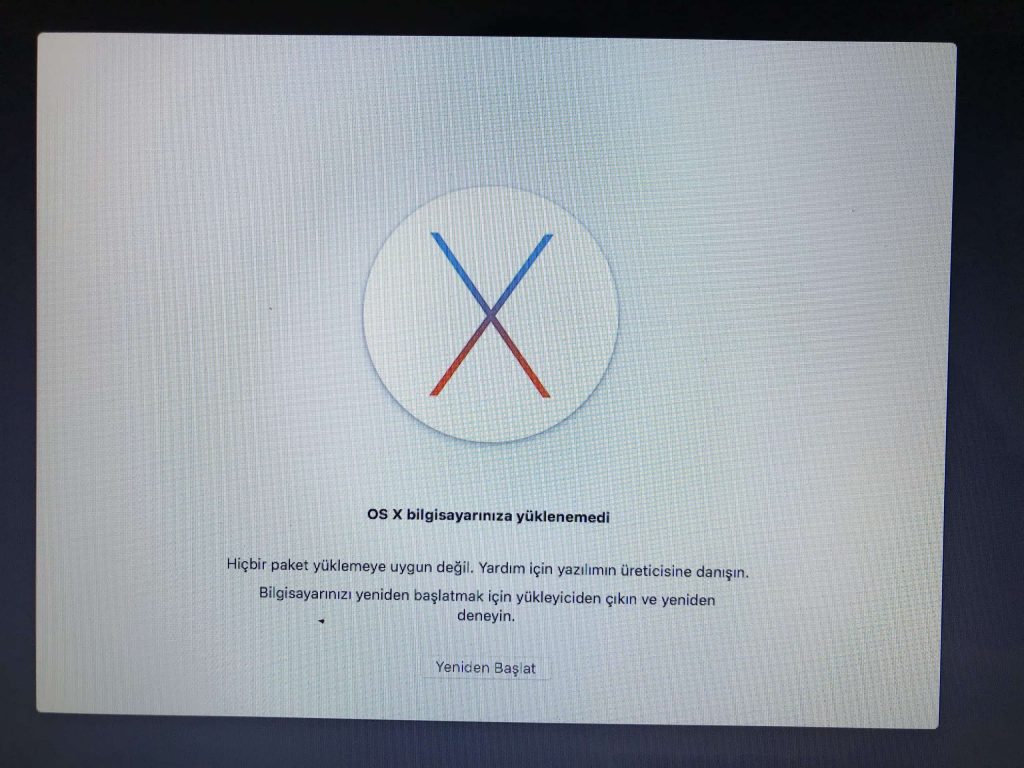Start up from macOS Recovery
Determine whether you're using a Mac with Apple silicon, then follow the appropriate steps:
- I updated two computers from Yosemite to El Capitan with no problem. Then I tried to update a friend's computer from 10.6.8 Snow Leopard to El Capitan and I got caught up in the limbo where it keeps downloading but won't install and worse yet, won't go back to the previous system.
- Oct 01, 2015 Go to the Applications folder. Open the program called “Install OS X El Capitan”. Follow the on-screen instructions. If this program is missing or will not run, then move it to the trash and empty the trash, followed by re-downloading it from the App Store. An alternative approach is to create a dedicated installation drive from the El.
Apple silicon
Turn on your Mac and continue to press and hold the power button until you see the startup options window. Click the gear icon labeled Options, then click Continue.
Problem: I tried to install El Capitan, but it gives me error messages. If you really want to like El.
Intel processor
Make sure that your Mac has a connection to the internet. Then turn on your Mac and immediately press and hold Command (⌘)-R until you see an Apple logo or other image.
If you're asked to select a user you know the password for, select the user, click Next, then enter their administrator password.
Reinstall macOS
Select Reinstall macOS from the utilities window in macOS Recovery, then click Continue and follow the onscreen instructions.
Follow these guidelines during installation:
- If the installer asks to unlock your disk, enter the password you use to log in to your Mac.
- If the installer doesn't see your disk, or it says that it can't install on your computer or volume, you might need to erase your disk first.
- If the installer offers you the choice between installing on Macintosh HD or Macintosh HD - Data, choose Macintosh HD.
- Allow installation to complete without putting your Mac to sleep or closing its lid. Your Mac might restart and show a progress bar several times, and the screen might be empty for minutes at a time.
After installation is complete, your Mac might restart to a setup assistant. If you're selling, trading in, or giving away your Mac, press Command-Q to quit the assistant without completing setup. Then click Shut Down. When the new owner starts up the Mac, they can use their own information to complete setup.
Other macOS installation options

When you install macOS from Recovery, you get the current version of the most recently installed macOS, with some exceptions:
- On an Intel-based Mac: If you use Shift-Option-Command-R during startup, you're offered the macOS that came with your Mac, or the closest version still available. If you use Option-Command-R during startup, in most cases you're offered the latest macOS that is compatible with your Mac. Otherwise you're offered the macOS that came with your Mac, or the closest version still available.
- If the Mac logic board was just replaced, you may be offered only the latest macOS that is compatible with your Mac. If you just erased your entire startup disk, you may be offered only the macOS that came with your Mac, or the closest version still available.
You can also use these methods to install macOS, if the macOS is compatible with your Mac:
- Use the App Store to download and install the latest macOS.
- Use the App Store or a web browser to download and install an earlier macOS.
- Use a USB flash drive or other secondary volume to create a bootable installer.
OS X could not be installed on your computer.
No packages were eligible for install. Contact the software manufacturer for assistance.
Quit the installer to restart your computer and try again
Oh dear… When trying to install OS X 10.11 (El Capitan) you may encounter this message. This happens because the the installer certificates are no longer valid when checked against the clock of your mac.
Don’t panic though as this is easily fixed using Terminal, so don’t restart immediately.
- Click Utilities on the menu bar
- Select Terminal
- Type date 062112422016
- Exit Terminal
- Click Restart
El Capitan Could Not Be Installed On Your Computer Using
When you restart the mac and try the installer again it will now believe the certificates are valid and will continue as it should.
Comments are closed.